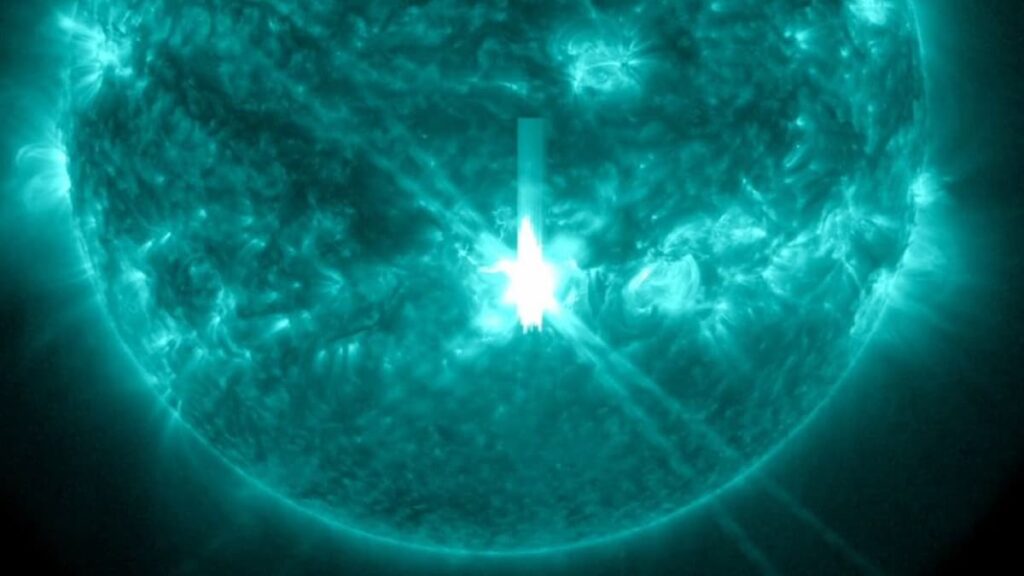On October 3, 2024, the Sun launched a colossal solar flare, registered as Eruption X9.05, marking the most powerful flare on record this solar cycle. The flare peaked at 8:10 a.m. EDT (1210 GMT), causing significant shortwave radio blackouts across Europe and Africa, where the sun illuminated Earth during the eruption. The intense radiation from the flare caused noticeable disruptions in high-frequency communications, affecting various services and long-distance radio transmissions.
The upcoming coronal mass ejection
The solar flare comes from the AR3842 sunspot group, which has a history of strong activity. Just days before, that same sunspot had released the X7.1 solar flare and produced a coronal mass ejection (CME). The upcoming CME, as confirmed by space weather forecaster Sara Housseal, is currently hurtling towards Earth, and is expected to strike between October 3rd and 5th. This could be exciting news for those interested in the aurora borealis, as CMEs are known to trigger geomagnetic storms, significantly enhancing auroral displays.
Understanding the effects of solar activity
Solar flares and CMEs release electrically charged particles that collide with Earth’s magnetosphere. When these particles interact with gases in our atmosphere, they can create stunning displays of light, known as the aurora borealis in the Northern Hemisphere and the aurora australis in the Southern Hemisphere. Recent solar activity highlights the dynamic nature of our sun and its effects on Earth.
Tracking space weather
The recent solar flare and accompanying radio blackouts serve as a reminder of the unpredictable nature of space weather. Those interested in tracking such events can download space weather apps to stay informed about potential auroras and current solar activity. Apps like “My Aurora Forecast & Alerts” and “Space Weather Live” provide valuable insights and forecasts, helping enthusiasts know when to expect these spectacular natural phenomena.


